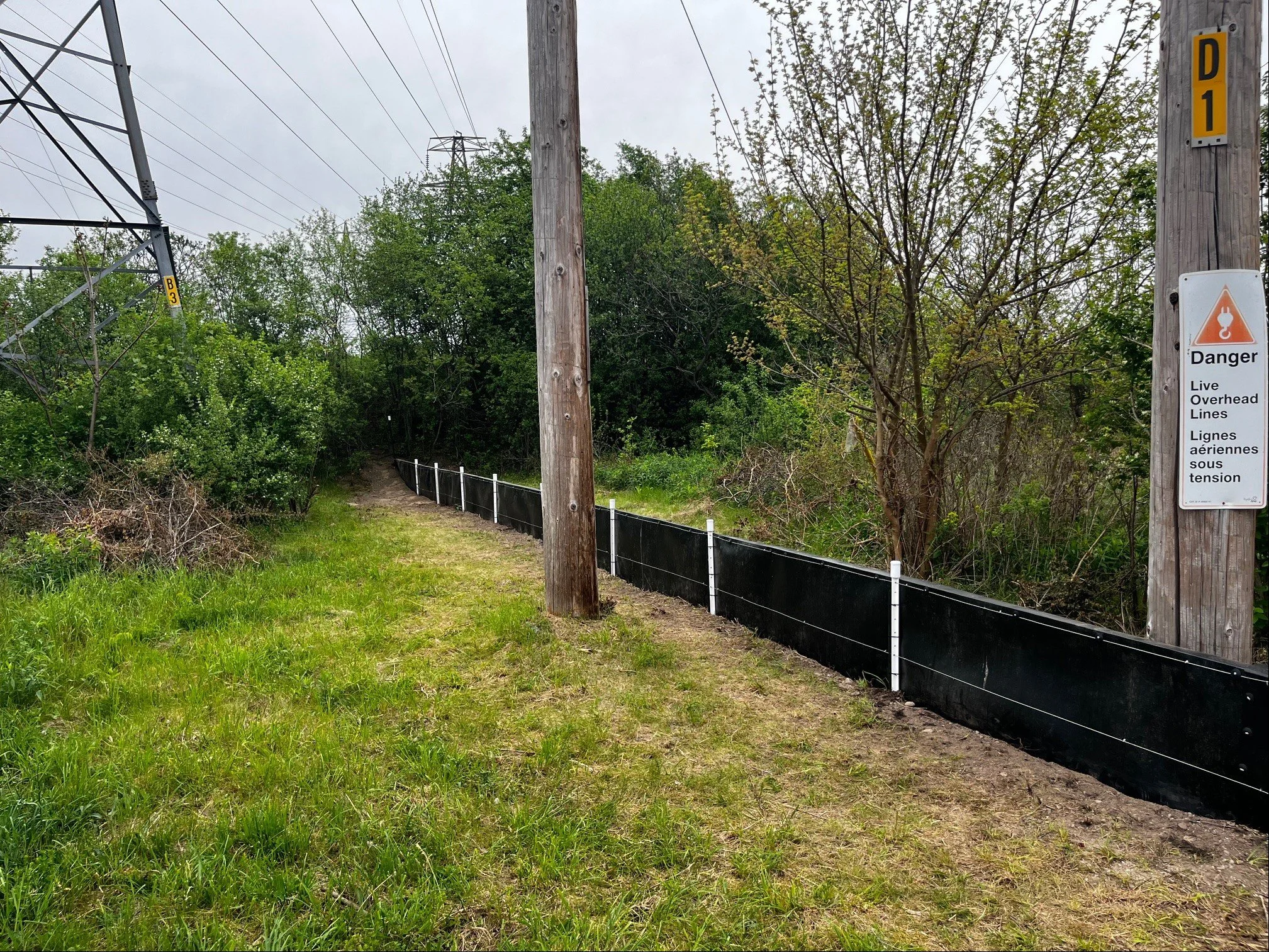
Frog Fencing
Animex wildlife fencing is designed and tested to control frog movement and exclude them from unwanted or dangerous areas. It optimizes natural frog behavior to encourage safe and fast movement away from the fence line and, unlike mesh fencing, inhibits climbing and entanglement.
Frog exclusion fencing
Frogs depend on water for breeding, with females laying eggs in pools or ponds. Some species stay close to water throughout their lives, while terrestrial frogs live mostly in forests or grasslands but still return to water to breed. These terrestrial species are more mobile, with adults migrating to breeding pools in spring and returning afterward, and with large numbers of juveniles dispersing to new habitats in late summer.
These seasonal movements put frogs at risk when roads or construction sites block their routes. Such barriers fragment habitats, increase mortality from road traffic and site activity, and may also involve the loss or relocation of breeding ponds. Fencing can help by guiding frogs away from dangerous areas and toward newly created breeding ponds, while also allowing for population assessments before development begins.
Used alongside tunnels and other mitigation measures, well-designed fencing can reduce deaths without interrupting the natural life cycle. Poorly designed fencing, however, is often ineffective, as frogs may climb over it, pass through gaps, or become entangled.
IMAGE: Field trip to visit an Animex fencing install to control the movement and help reduce road mortality of various amphibians, including frogs, in Brazil.
Top 5 frog species Animex is commonly used for:
Nothern cricket frog
Dusky gopher frog
Southern gray tree frog
Northern leopard frog
California red-legged frog
California red-legged frog Rana draytonii
Chiricahua leopard frog Rana chiricahuensis
Dusky gopher frog Rana sevosa
Mountain yellow-legged frog Rana muscosa
Oregon spotted frog Rana pretios
Sierra Nevada yellow-legged frog Rana sierrae
Northern cricket frog Acris crepitans
Barking treefrog Hyla gratiosa
and more…
Height
40in is the product height most commonly used with frogs
Standard above-ground installed height 22in / 550mm (with anti-climb and anti-dig lips)
We have various fencing products suitable for frogs
Temporary
Recommended for short-term projects between 1-5 years but has an anticipated lifespan of 25 years.
Guide Price: USD $4 per ft / CAD $18.50 per m
Semi-permanent
Recommended for long-term projects of approximately 15 years but has an anticipated lifespan of 50 years.
Guide Price: USD $7.50 per ft / CAD $37 per m
Permanent
Recommended for long-term projects of approximately 25 years but has an anticipated lifespan of 50 years.
Guide Price: USD $30.50 per ft / CAD $153.50 per m
Guide prices are based on Animex fencing material and standard fixings and fasteners. This does not include support posts or installation. AMX-48, AMX-60 or a customized, unlisted product may be more appropriate for some projects. Please contact us if you have any concerns or questions about the height or type of fence that is best for your project.











